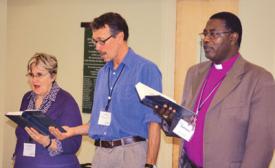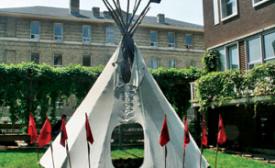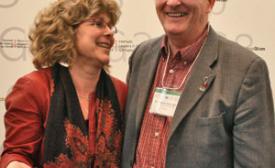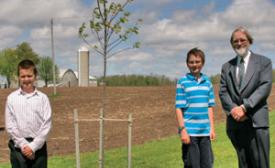Volume 14, Number 14
‘A time for inspired leadership and action’
Just days before the leaders of the G8 countries were preparing to meet in central Ontario to discuss such new issues as maternal health in the developing world and a restoration of the rule of law in places like the Democratic Republic of Congo and Iran, religious leaders from these same countries—and others—gathered in Winnipeg in an effort to get their respective governments to live up to a
MCC plans for global change
Mennonite Central Committee (MCC) is changing how it does its work, but not the work itself.
Secrets abound in This Hidden Thing
Beginning in Winnipeg in the1920s, This Hidden Thing by Manitoba novelist Dora Dueck tells the moving story of Maria Klassen, a newly landed Mennonite immigrant. Maria becomes a domestic for a prosperous Canadian family in order to support her family as they struggle to build a life for themselves on a farm near the town of Winkler.
I and II Timothy, Titus have practical lessons for life today
Getting to know Menno
Dark Night leads to stronger faith
A ‘timeless’ message about war and peace
John Howard Yoder is one of the best-known Mennonite thinkers on peace. But before Yoder, there was Guy F. Hershberger, whose reflections on war, peace and violence not only helped Mennonites navigate perilous times in the early- to mid-20th century, but also laid the foundation for Yoder’s groundbreaking work.
Addressing the issue of extreme poverty in Canada
Of the 192 member countries of the United Nations, Canada ranks fourth on its Human Development Index, but Canada’s First Nations rank 68th.
According to Edith Von Gunten, who co-directs Mennonite Church Canada’s Native Ministry alongside her husband Neill, “There is a lot of work to do right here in Canada. . . . The treaties are not being honoured or respected.”
Suderman proposes a ninth Millennium Development Goal
There are currently eight Millennium Development Goals (MDGs) that were agreed to by 192 United Nations member states in 2000 and that are to be achieved by 2015. But according to Robert J. Suderman, general secretary of Mennonite Church Canada, there should be a ninth.
Comfortable being rural
On a cold, wet Sunday morning, May 5, 1935, Arthur Roth, his wife Melinda, and his mother, Mary Schrog Roth, made their way to church in East Zorra Township in southern Ontario. At the end of the lane they made an unaccustomed turn to the left, heading to the new congregation at Cassel, instead of their familiar congregation on the 16th Line: East Zorra Amish Mennonite Church.
‘The river sings to me a song’
The yellow warbler flits among the trees back of the patio and main building at RiverSong as Susan Pries takes a break from providing meals and snacks to a daylong retreat of pastors.
From ‘Imagine’ to ‘Material Girl’
As a fledgling whipper-snapper the great inherent threat to my young soul was said to be the subliminal messages being “backmasked” into music that would hoodwink me into becoming morally reprobate, or, worse, a Montreal Canadiens fan. Determined, and thoroughly misguided, religious groups fought to have backmasking on vinyl records banned forever.
Asking the right questions
I spend a lot of time pondering leadership these days. I see the word everywhere. I suspect I could take a course on leadership every weekend of the year in our city. Despite all this energy on building leaders, I hear more negatives than positives summed up by this recurring phrase, “We just need leadership,” as if this will solve all that’s ailing the church and the world.
For Discussion
A leader for these times
Because we are a priesthood and not a hierarchy, this space is sparing in calling special attention to any one of its “priests.” But the occasion of the closing session of Mennonite Church Canada’s assembly, held in Calgary, begs for an indulgence in marking the event of the retirement of Robert J. Suderman.















